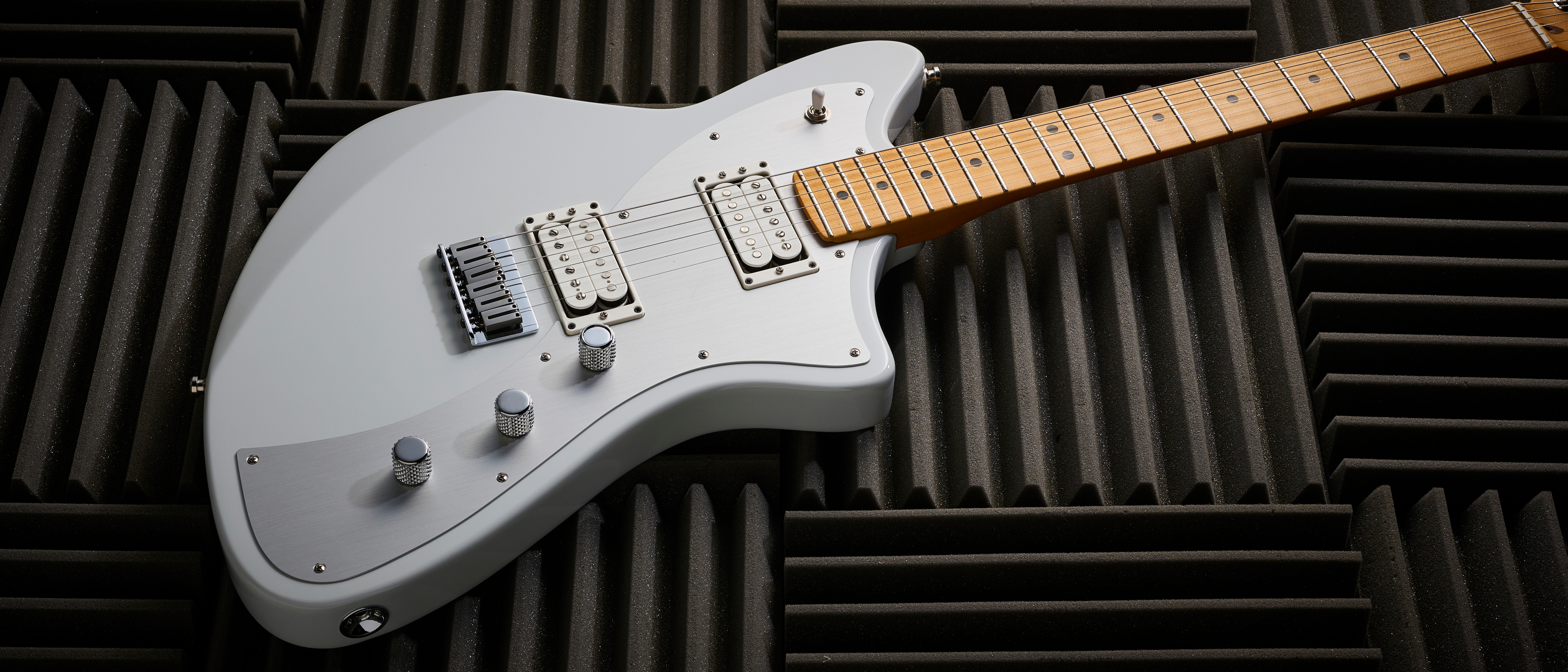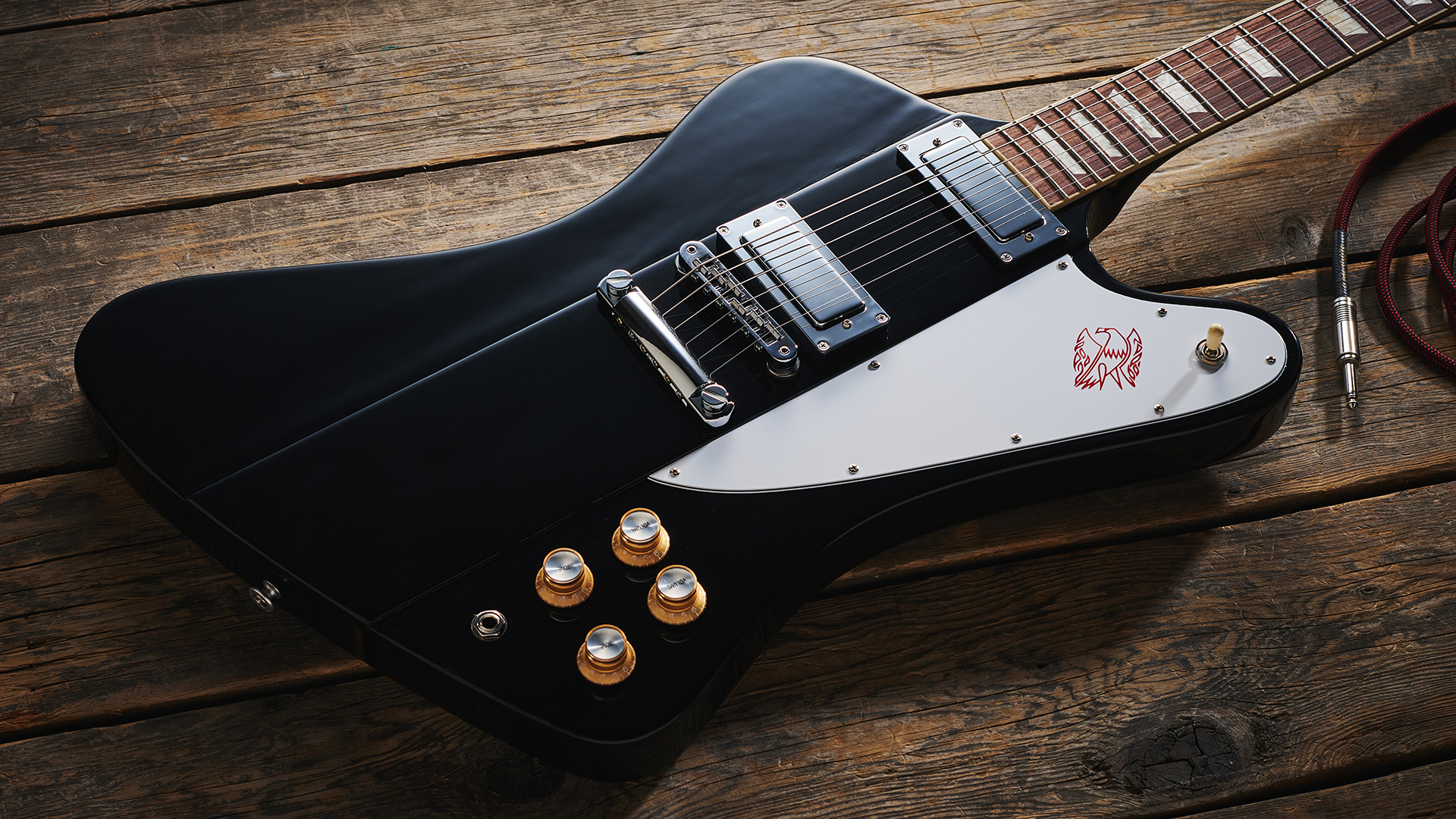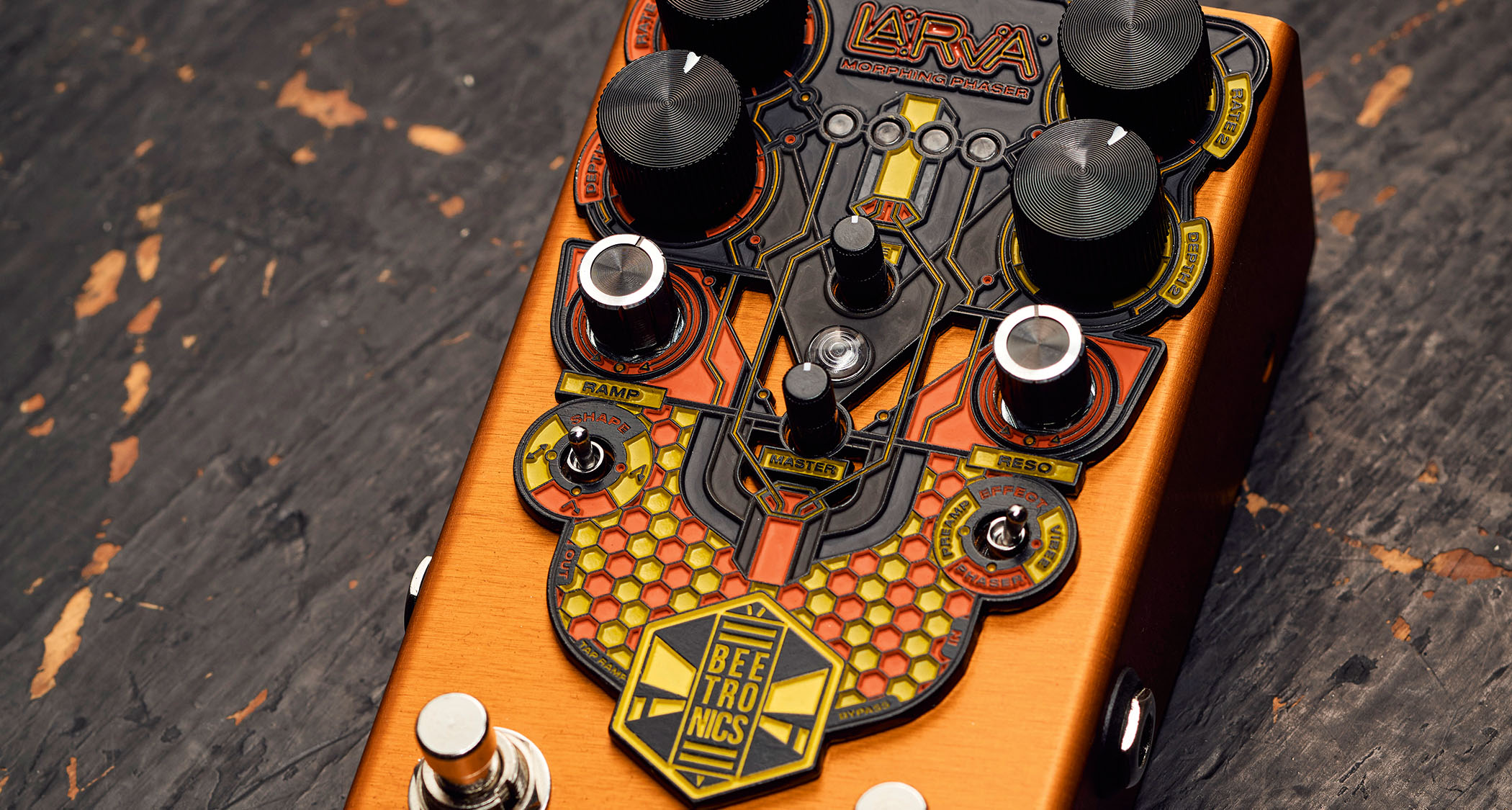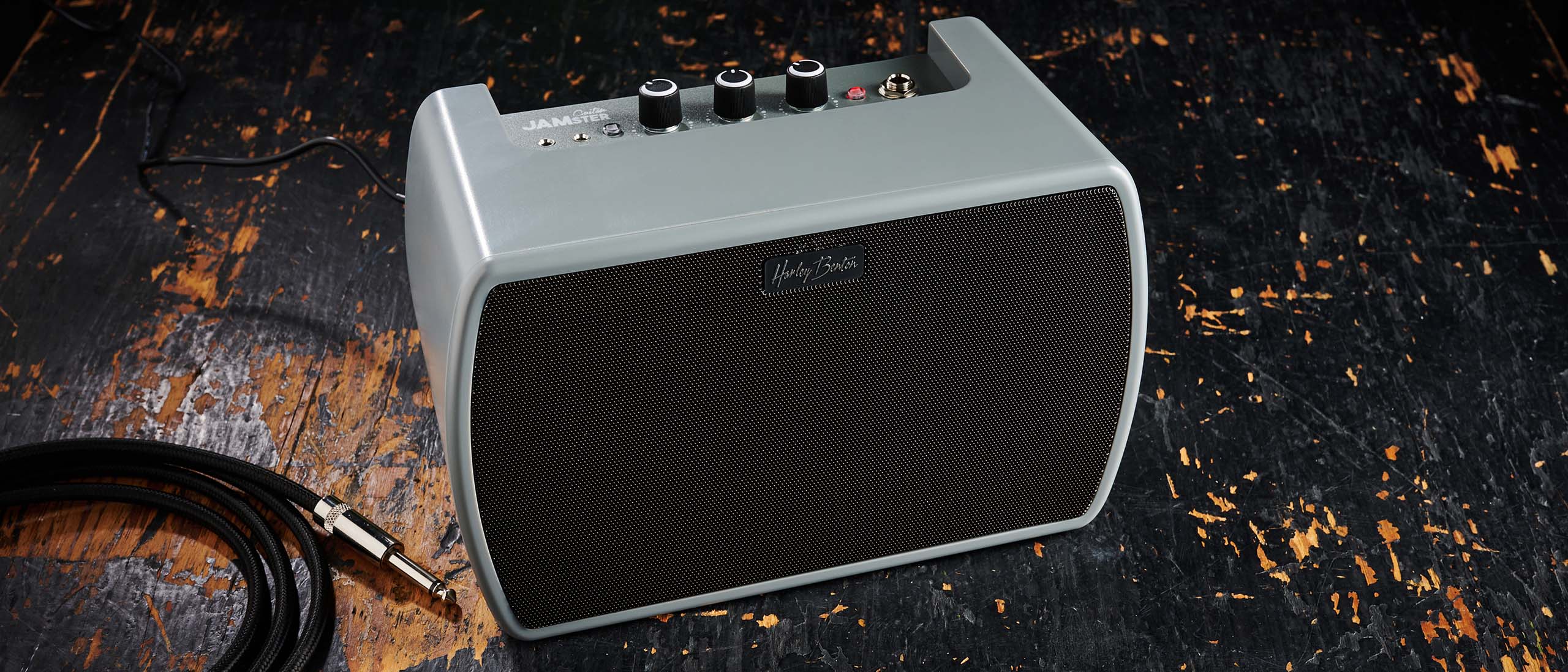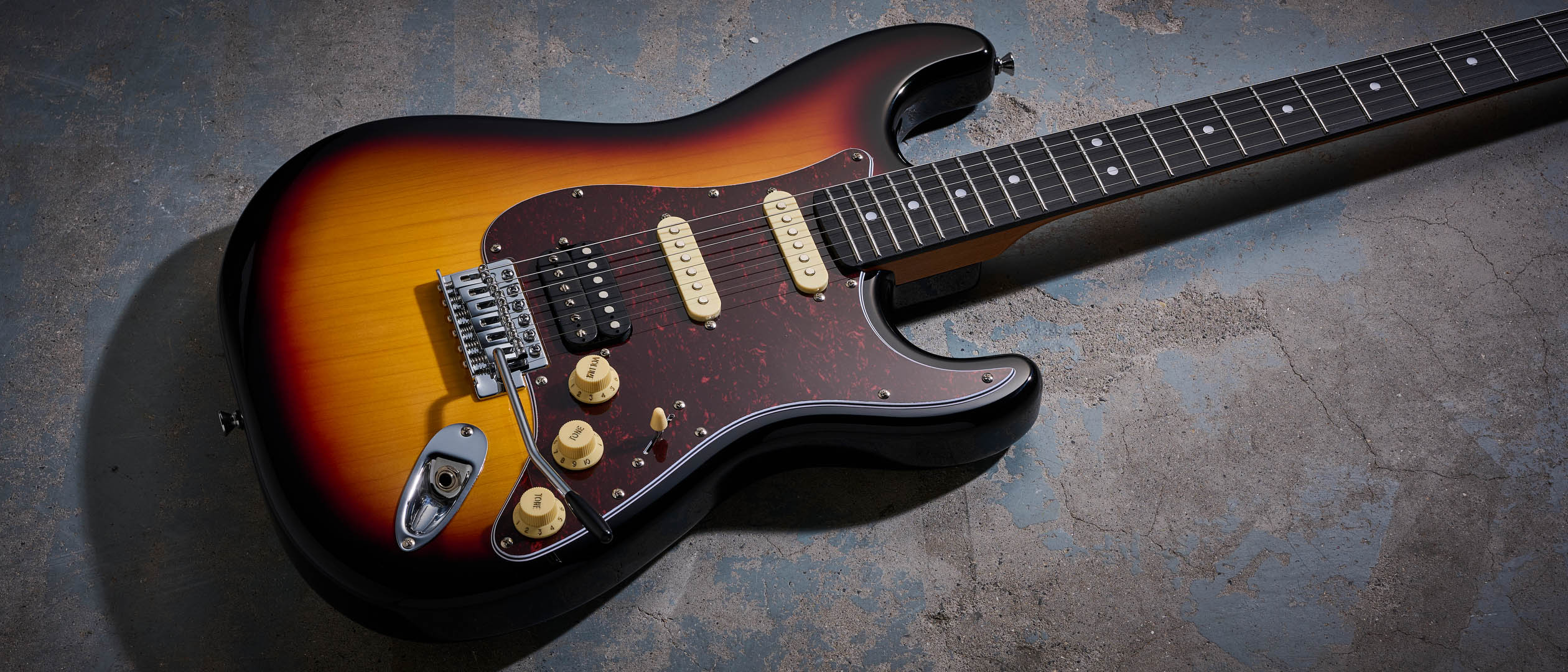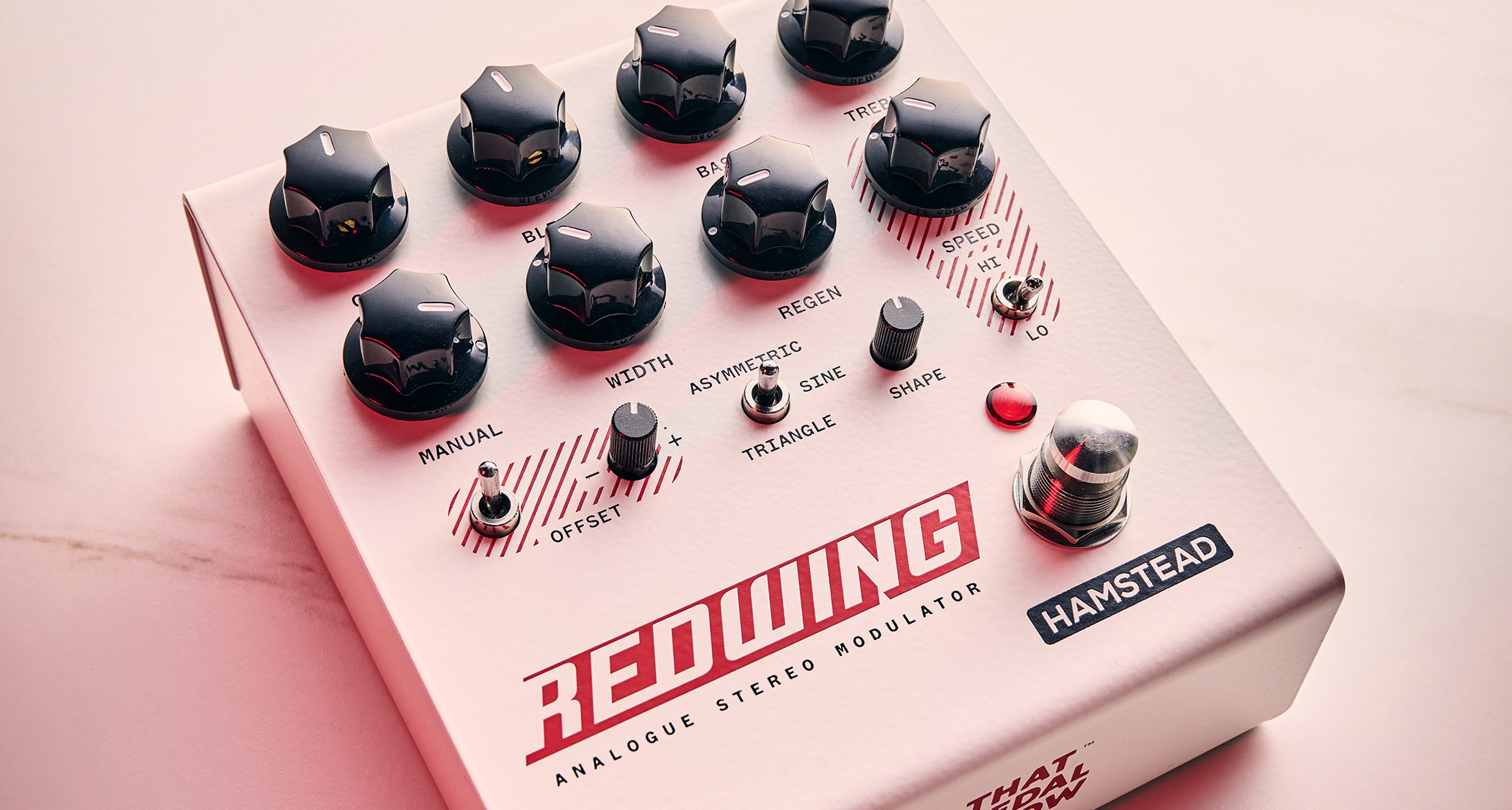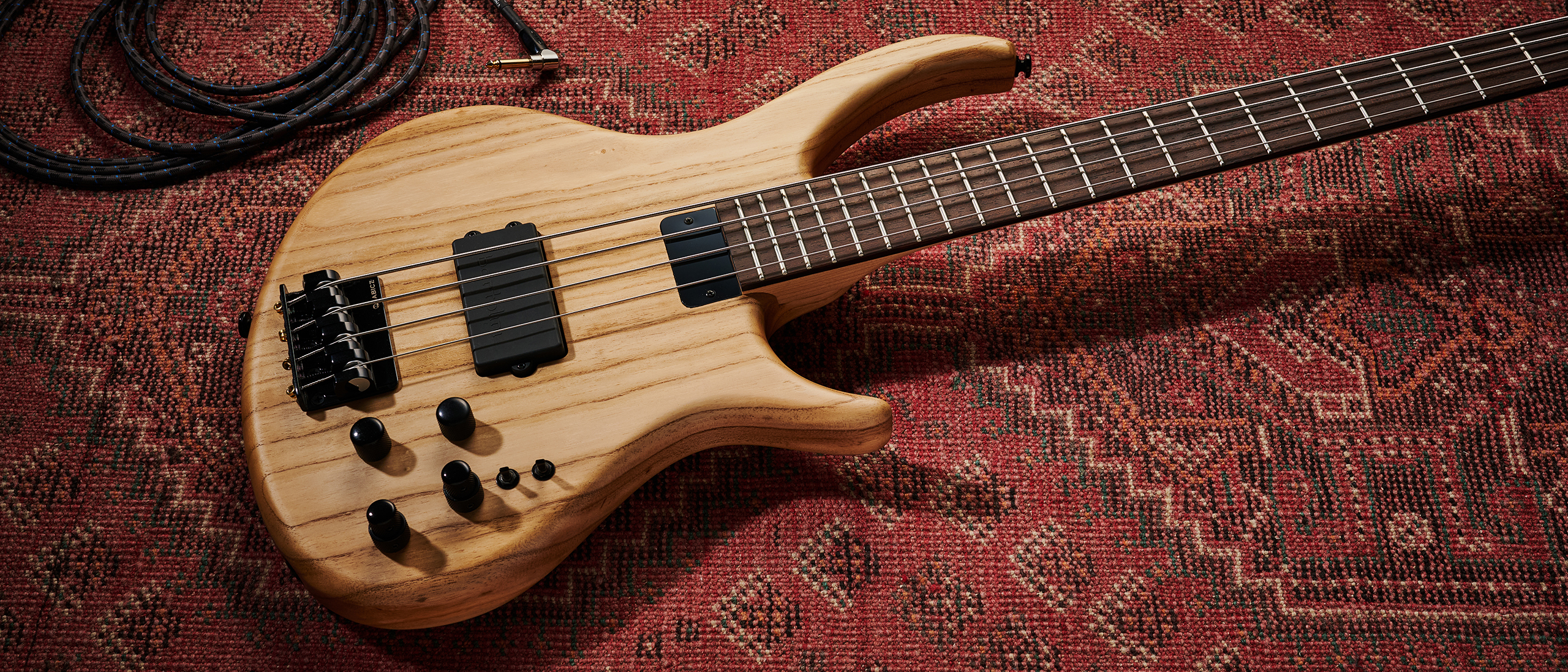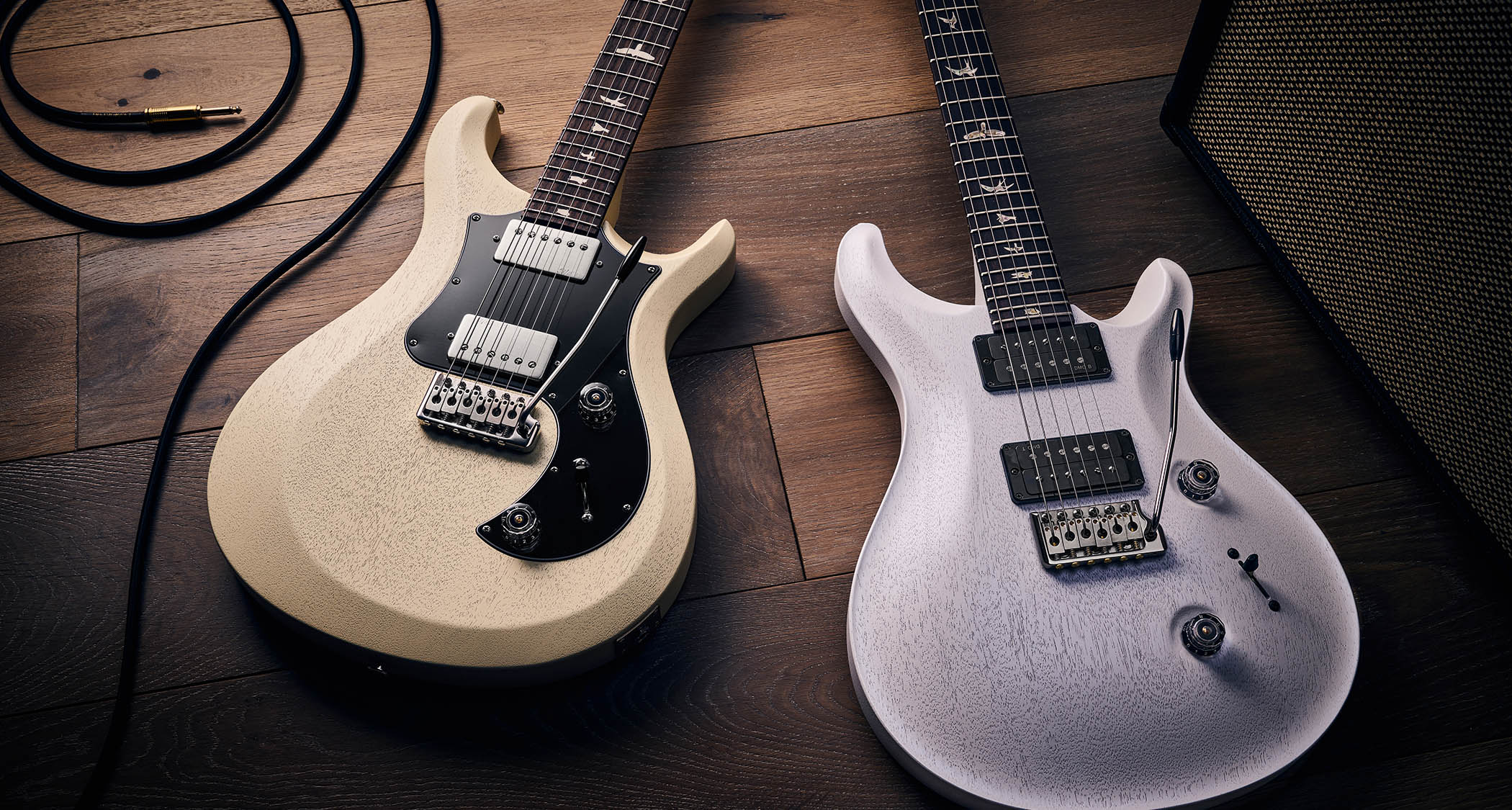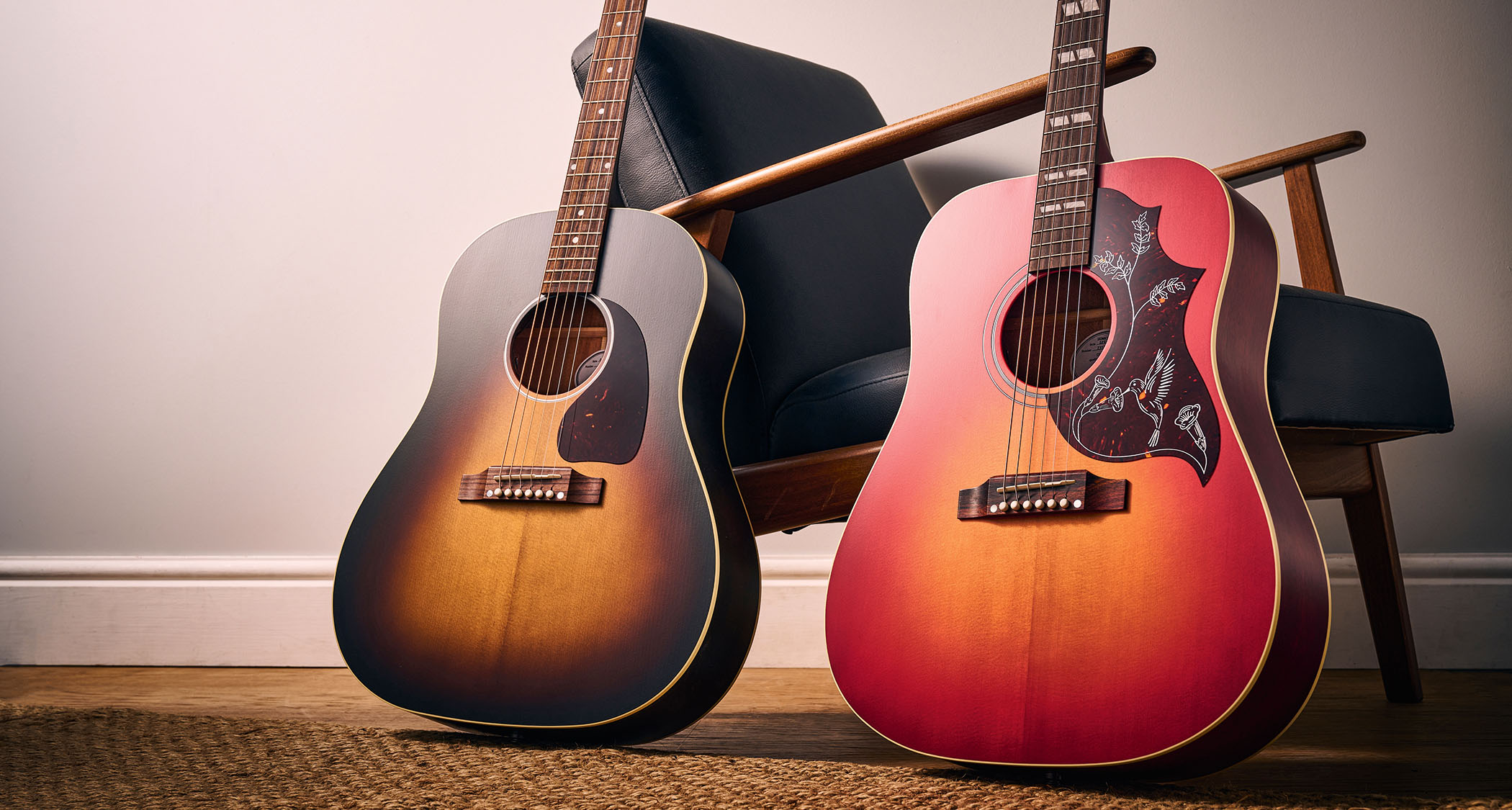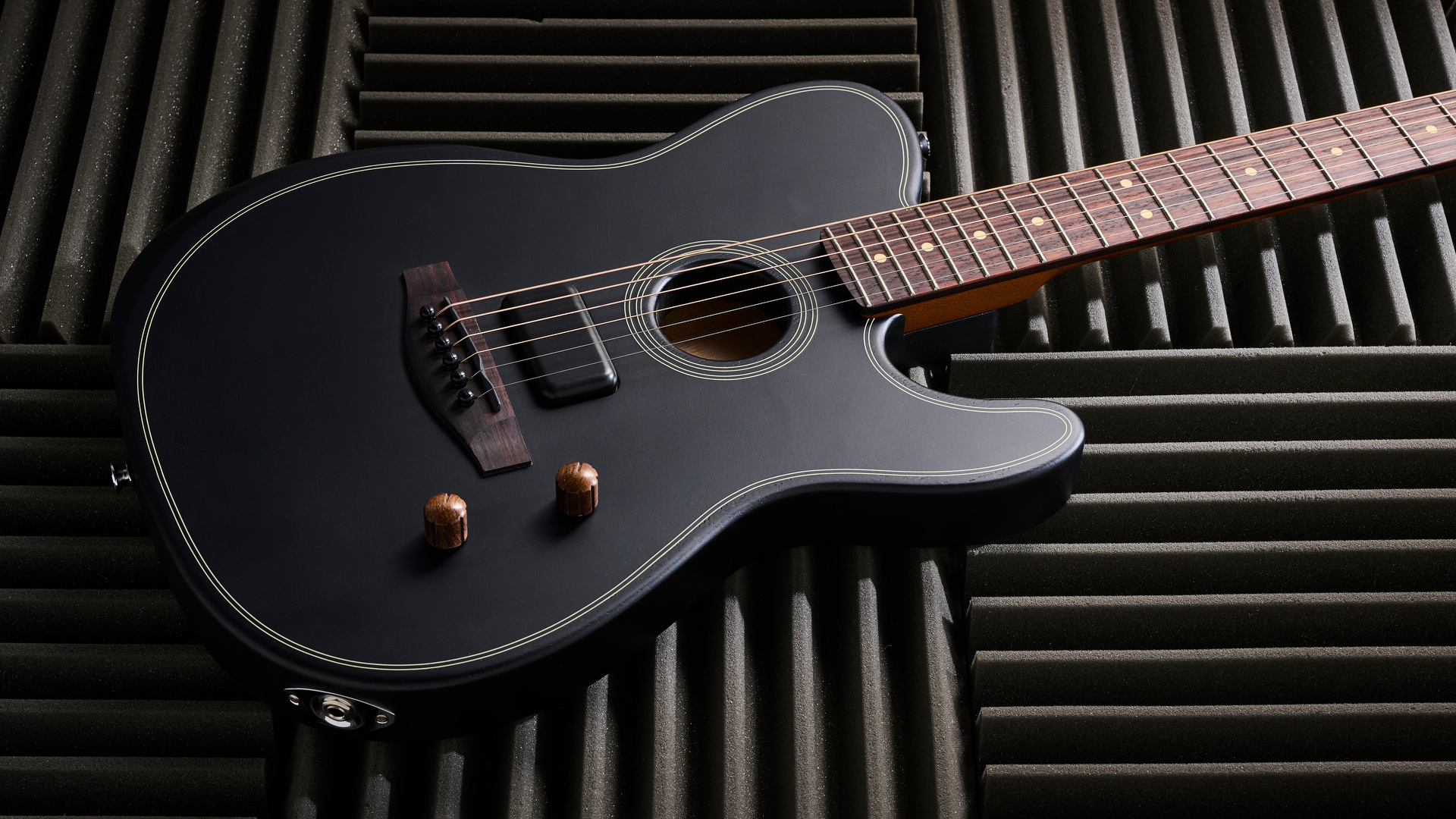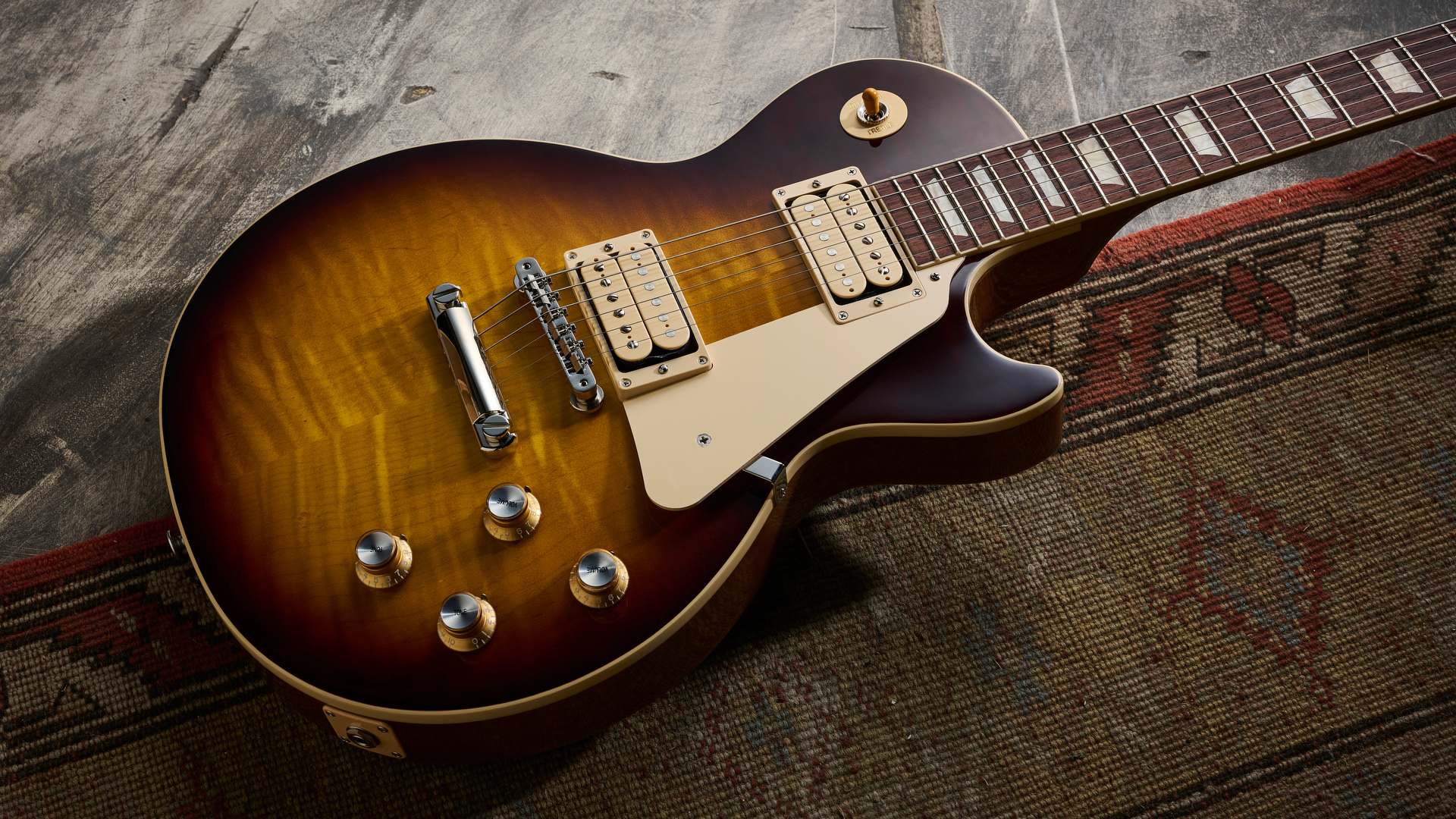Guitar World Verdict
This is one of the best legitimately new guitars Fender has produced in decades – despite one painfully positioned volume control. As it stands, however, this is convincing proof of the company’s contemporary offset ambitions and a standout guitar in its highest-spec range. Long live the Meteora!
Pros
- +
One of Fender's best-playing necks.
- +
Beautifully put together and set up.
- +
Haymaker bridge humbucker is supremely balanced and can handle heavier styles with ease.
- +
Incredible tonal versatility.
- +
Comfortable body shape.
Cons
- -
That volume knob placement is borderline hazardous.
- -
Neck humbucker is a little low-end heavy.
- -
Finishes are somewhat uninspiring.
You can trust Guitar World
What is it?
The Meteora is the biggest outlier in Fender’s high-performance American Ultra II lineup: it’s based on a body shape that wasn’t designed six-plus decades ago.
Graduating from its debut appearance in the 2018 Parallel Universe lineup, the none-more-offset has lived on as part of the Player Plus series, but the Ultra II edition marks its most expensive incarnation yet.
It also replaces the Jazzmaster in the range, as Fender sought to position it as a “sports car version” of its venerable offset – heck, there’s even a bass version now.
On paper, it makes perfect sense: the Meteora is a contemporary electric guitar design, so to equip it with modern player-centric specs should be a sure thing. But with a price tag of $2,249, are players searching for a pro-spec guitar going to be willing to take the risk on an unfamiliar Fender shape over a Strat or Tele?
Specs
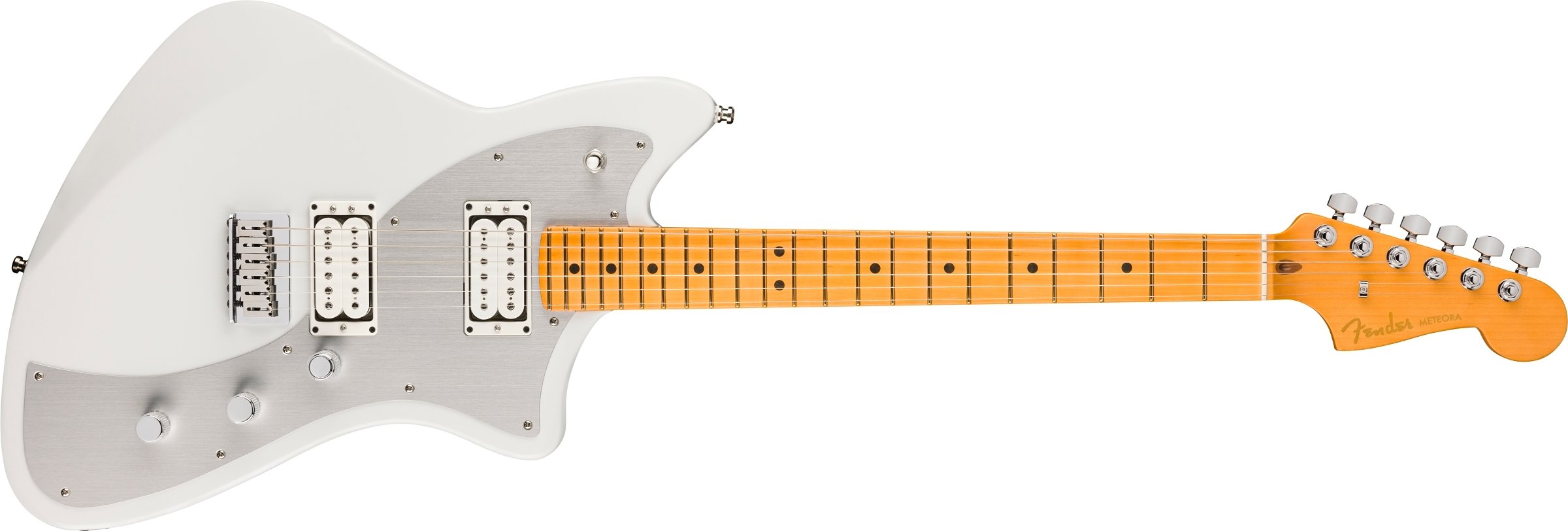
Launch price: $2,249/£2,189/€2,639
Made: USA
Type: Six-string electric guitar
Body: Alder
Neck: Quartersawn maple, modern D
Fingerboard: Ebony, 10-14" compound radius
Scale length: 25.5"
Nut/width: Graph Tech TUSQ, 24.8mm
Frets: 22 medium jumbo
Hardware: Short post locking tuners, 6-saddle hardtail bridge with stainless steel block saddles
Electrics: 2x Haymaker humbuckers w/ Alnico V Bar magnets, 3-way pickup selector, 1x volume (w/ S-1 coil-split switch), 1x tone, 1x bass cut knob.
Left-handed options: No
Finishes: Texas Tea, Ultraburst, Avalanche (reviewed)
Cases: Fender hardshell case
Contact: Fender.com
Build quality
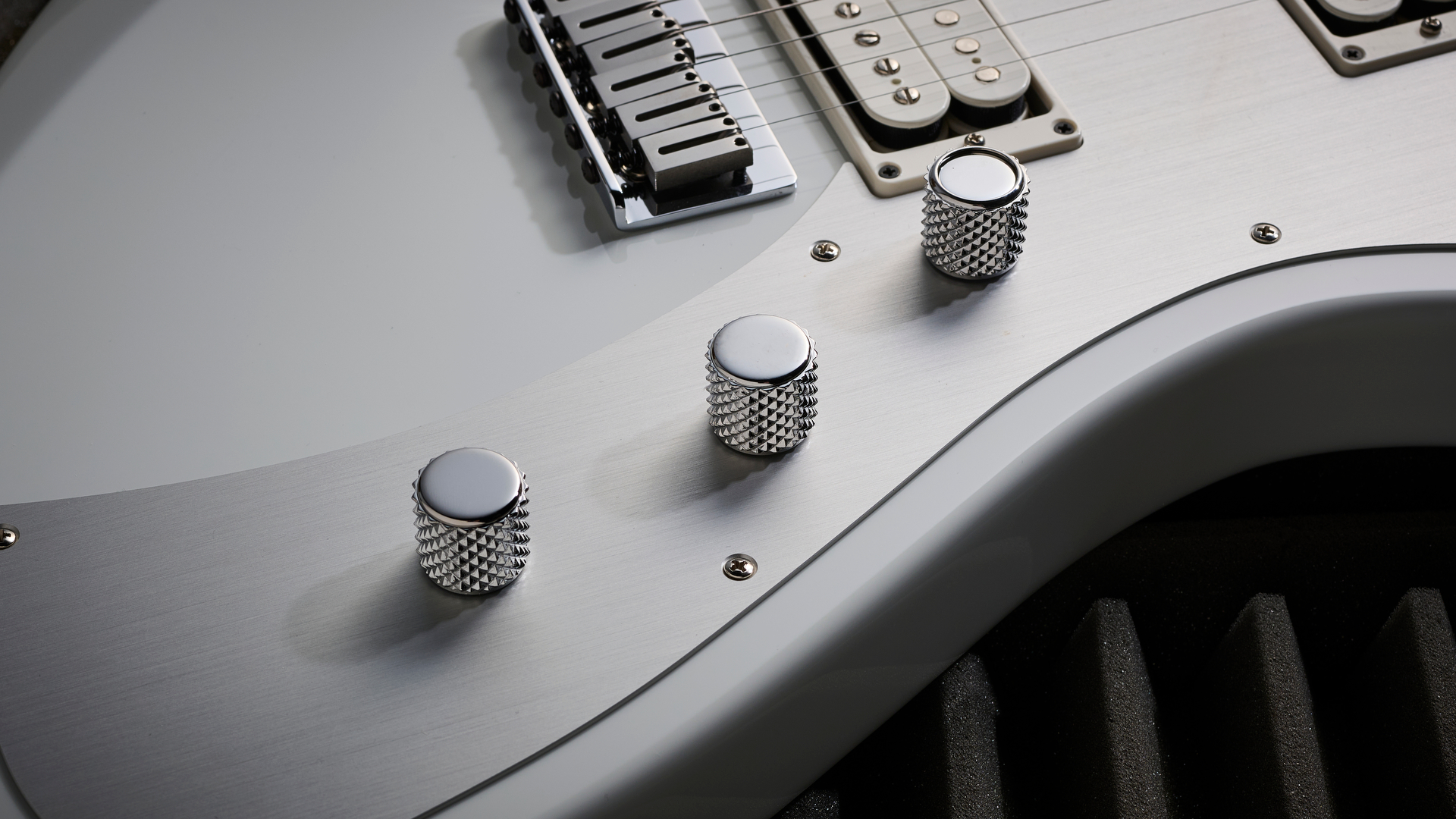
Build quality rating: ★★★★☆
The American Ultra II range is pitched as Fender’s most advanced instruments yet, and the Meteora is spec’d accordingly. Its quartersawn maple neck is claimed to be Fender’s fastest ever, courtesy of an Ultra Satin finish with Modern D profile and 10-14” compound-radius fingerboard. My Avalanche-finished review model features a satin-finished maple fretboard, but Texas Tea and Ultraburst colorways come with ebony.
Ultra rolled fingerboard edges further enhance the smoothness factor to the point where the medium-jumbo frets simply glide by, while the addition of glow-in-the-dark Luminlay side dots and a Graph Tech TUSQ nut add to the instrument’s finessed spec sheet.
The finishing touch to the ’go-faster’ feel are the radical contours around the rear of the body that offer increased access to the upper register of the fretboard, adding extra comfort to an already comfortable design – more on that later.
Hardtail bridges are very much in vogue, and the stainless steel saddles here look the part, while the deluxe locking tuners are a welcome addition for foolproof string changes.
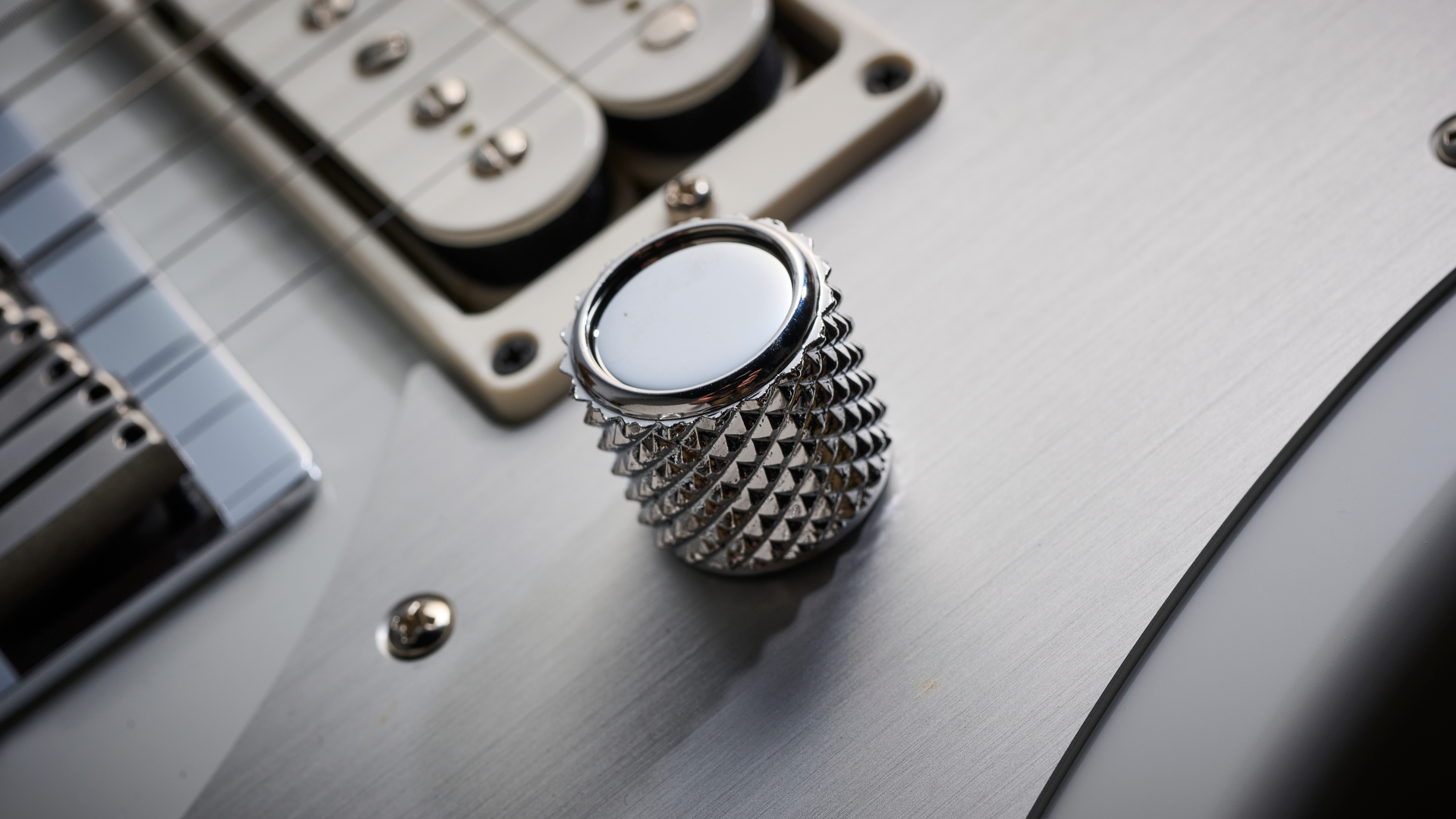
Given the brand-name parts that feature elsewhere on the instrument, it may be a little disappointing to find a pair of in-house Fender humbuckers onboard, but its all-new Haymaker units are touted as “powerful, expressive and articulate”. So you can file those under ’modern’.
They’re adjusted via an unusual-for-Fender control suite of Master Volume, Treble Cut (essentially a Master Tone) and Bass Cut, while an S-1 Switch appears in the volume knob to activate a coil-split for both pickups.
I can confirm that thing hurts when you hit it
Speaking of controls, Fender claims those aluminum knobs are ’knurled’, but a better description would be ’cheese grater’. The sharpness makes them grippier, but given the proximity of the volume knob to the bridge pickup, you’ll have to watch your hand during more aggressive performances – it wasn’t a problem for me 99% of the time (and I appreciated how the placement aids pinkie volume swells), but I can confirm that thing hurts when you hit it.
Unfortunately, given that control houses the S-1 switch, it’s not an easy swap, either. Forget the frets – Fender might want to give its controls a rolled edges treatment in future, or at least shift their position.
Otherwise, the build quality is impossible to fault. Finishing is perfect, the neck pocket is tight, and my review model was perfectly set up for speed. There’s some lovely attention to detail with the polished string tree and recessed output jack, not to mention that anodized aluminum pickguard. Minus the volume knob placement, it’s one of the most impressive Fender USA builds we’ve seen in recent years.
Playability
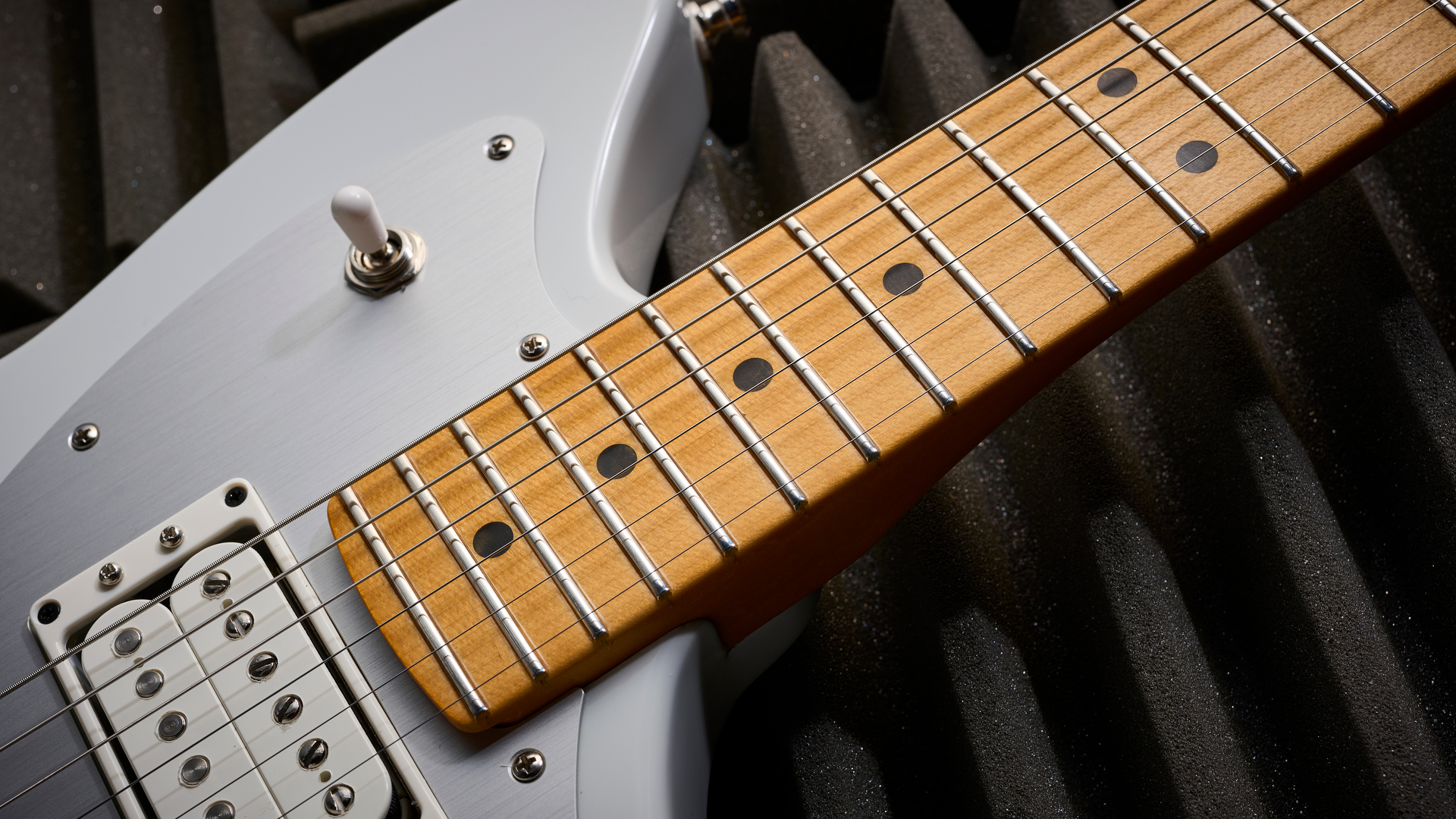
Playability rating: ★★★★★
There’s something about the Meteora’s shape that tricks your mind into thinking the body is enormous. But in reality, it’s slightly smaller than its closest stablemate, the Jazzmaster, with a slimmer waist and comparable weight. It’s a surprisingly comfortable shape to play sitting down, and well-balanced standing up.
Full disclosure, I’ve got a bias for high-performance offsets – it’s a neglected market, judging by the circles I play in, although that’s slowly being rectified – but the way the Meteora plays is, in short, perfection.
The D profile neck shape is somewhere between an Ibanez Wizard and your common-or-garden Strat appendage. It’s a goldilocks depth that disappears into your hand.
The satin finish and rolled fingerboard edges combine to create an effortless playing experience, which is consistent right up to the 22nd fret, thanks to the compound radius and some of the most radical body contouring we’ve seen on a Fender. Once you’ve played a sculpted heel, it’s hard to go back to a rock-blocking bolt-on, which in 2025 feels positively archaic. But anyway.
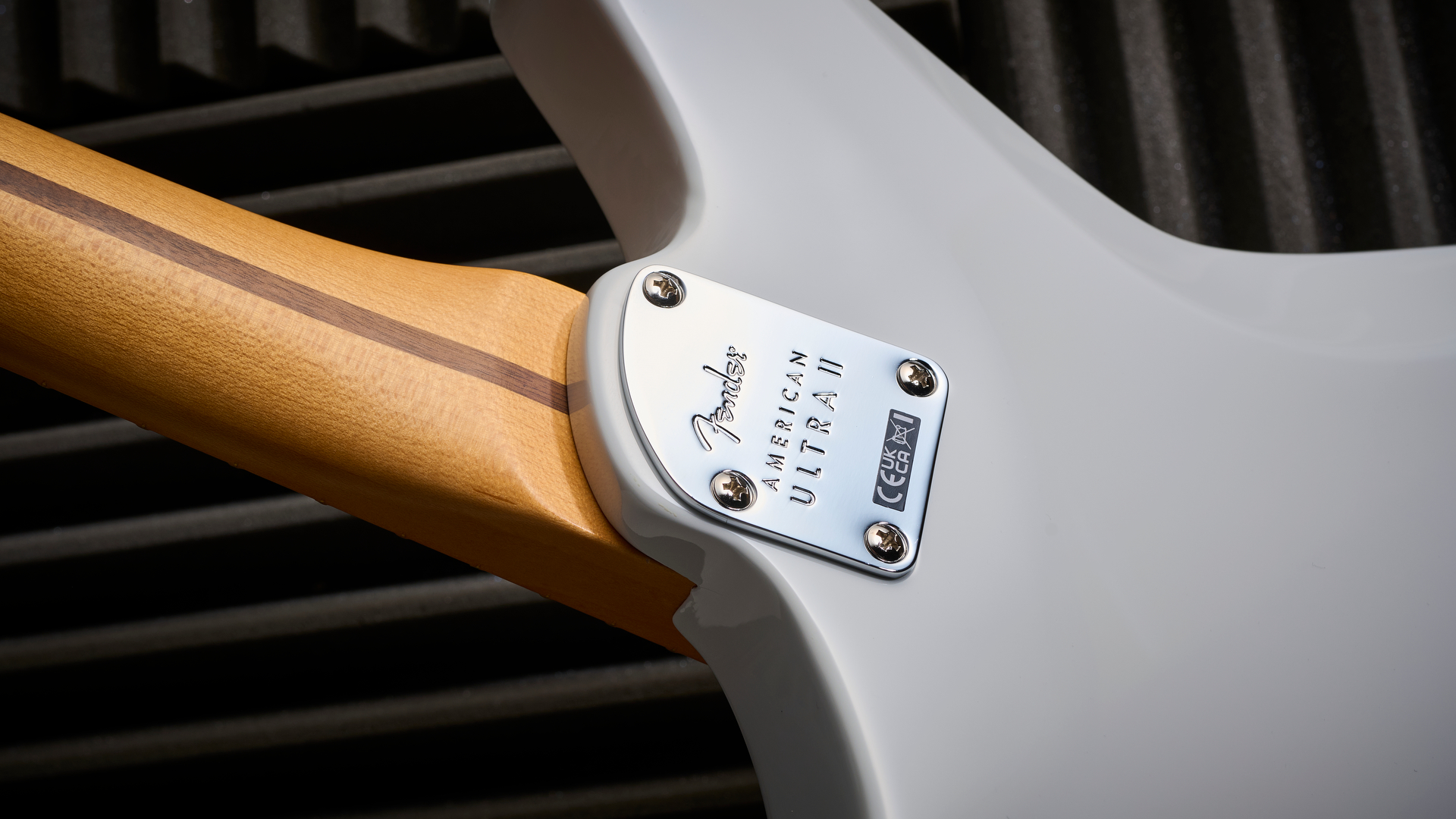
Sounds
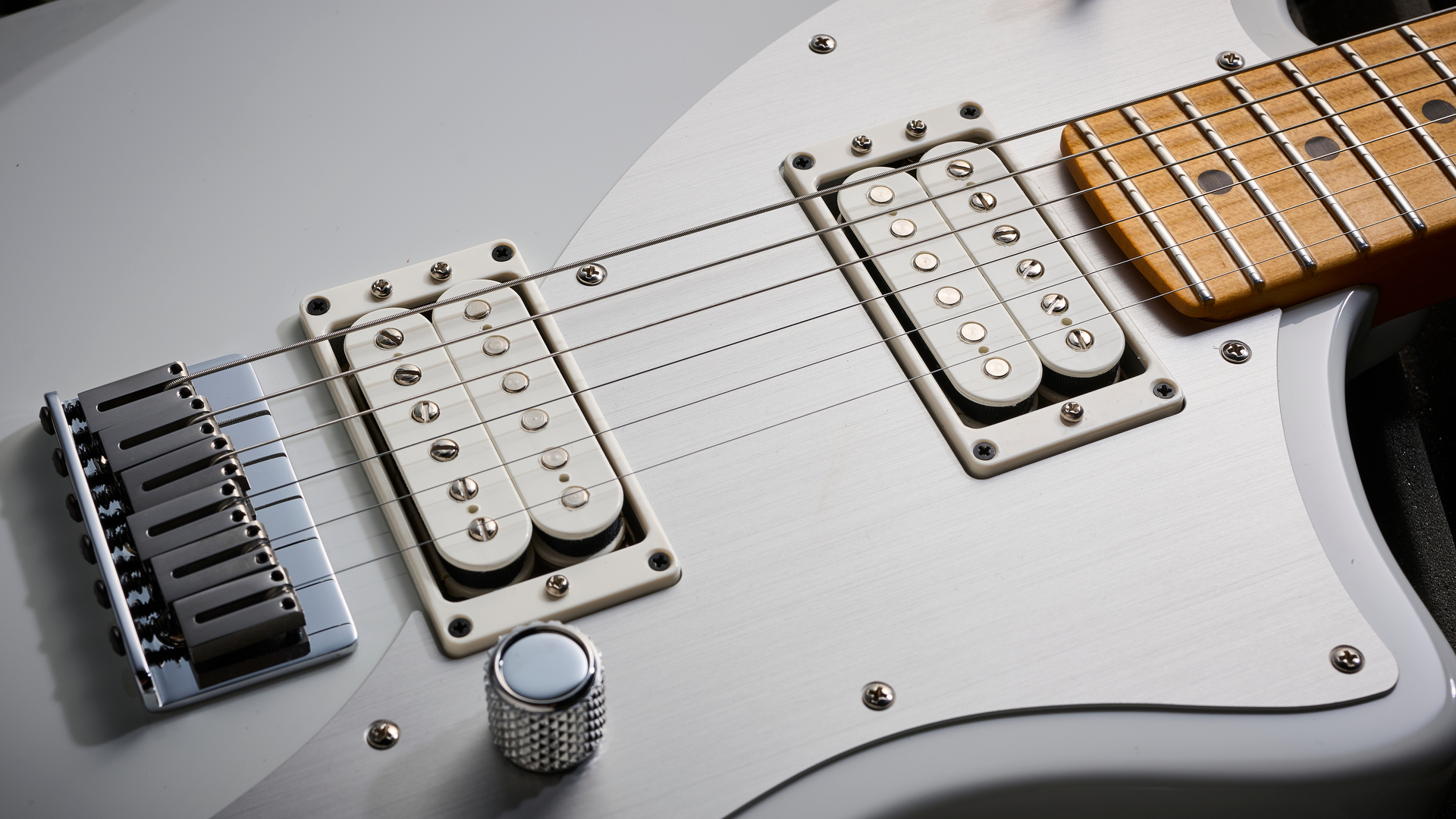
Sounds rating: ★★★★☆
The Luminlay dots may be borrowed by Fender stablemates Jackson, but the pickups sound like they’re inspired by Charvel. These are hot and bright, yet with an incredibly meaty bass response.
That works wonders with the bridge pickup, which is rich and well-rounded, and will appeal to players of a heavier persuasion – the clarity with gain is something to behold, with fierce definition even with lower tunings. Djent it most definitely does.
But the neck suffers from a woollier response that’s especially apparent on the low E string. A lower-output pickup might have delivered a more usable full-humbucker tone.
Splitting the coils helps, of course – being high-output humbuckers to start with, you’re not going to get into Strat territory here, but there’s just enough spank to funk, and you can certainly get some sparkle, too, ideal for melding with effects. Think Billy Corgan on early Smashing Pumpkins and you’re in the right coil-split tonal ballpark.
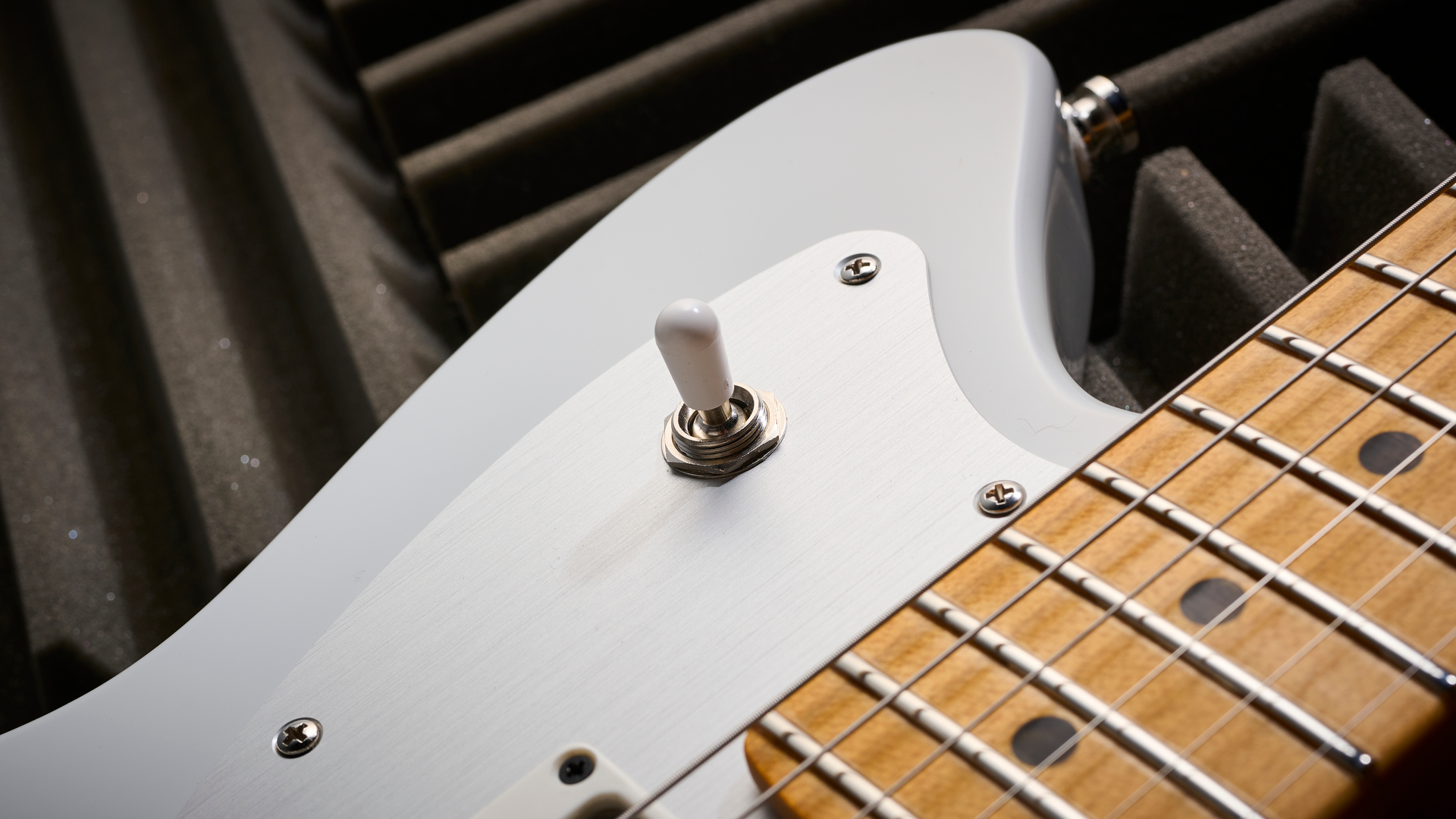
The Bass Cut knob is a relatively unique addition in the current Fender catalog and seriously bolsters the guitar’s versatility. Roll it back and you’ll trim the low-end and overall output, making for glassier cleans and more cutting dirty tones.
Given the pickups’ proclivity for low-end, I tended to roll this back a third or so much of the time, but I found I wanted it wound back further for the neck pickup. A Bass Cut knob or coil-split switch per pickup would certainly aid live performance, albeit make the control set more complicated.
As it stands, however, this is a superb guitar for recording and session work: being able to dial in the right amount of low-end for your drive pedals, amp or the mix you’re working with is a blessing. The treble bleed on the volume control helps to broaden the range of usable output levels, too, with no loss of high-end.
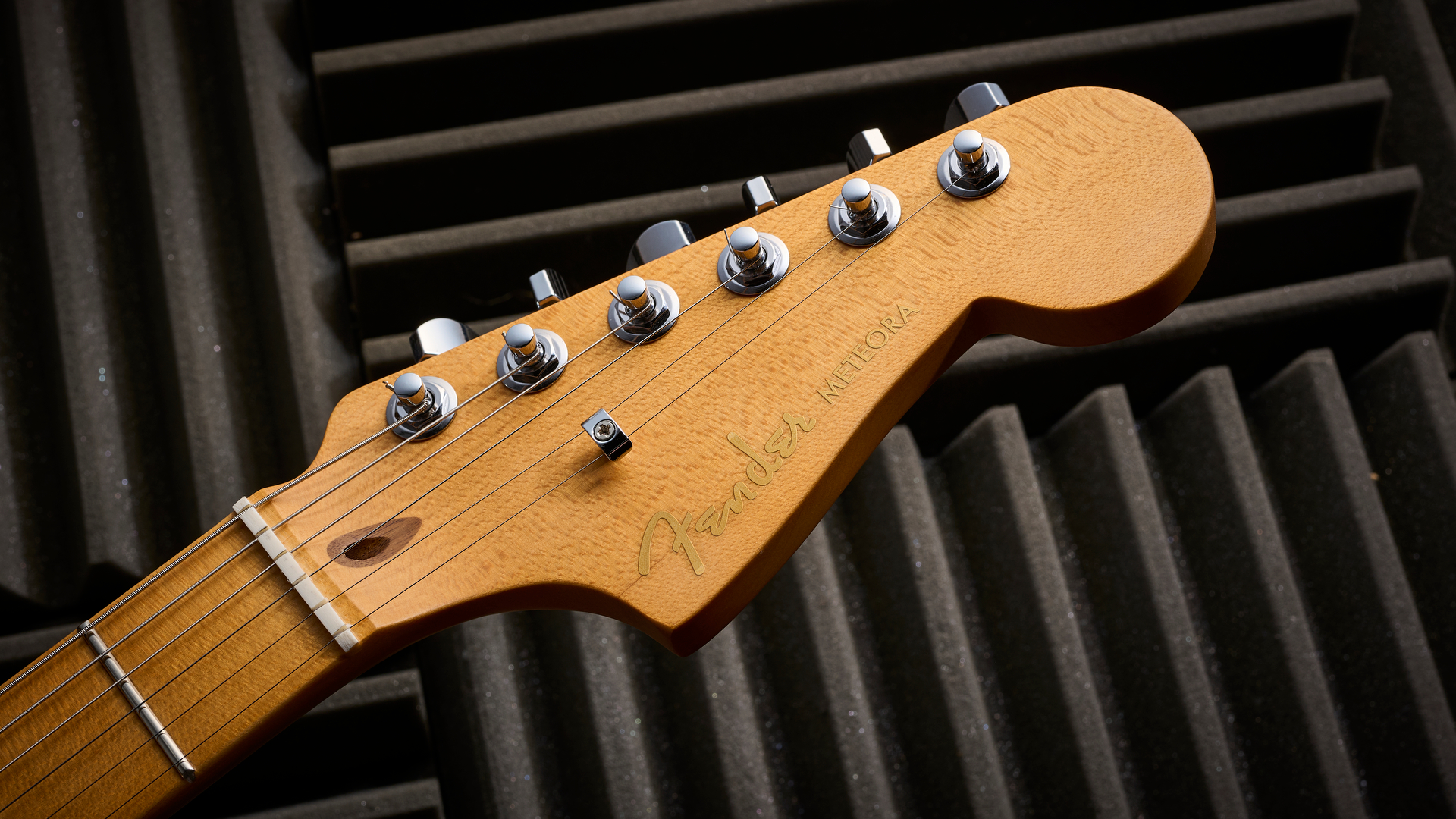
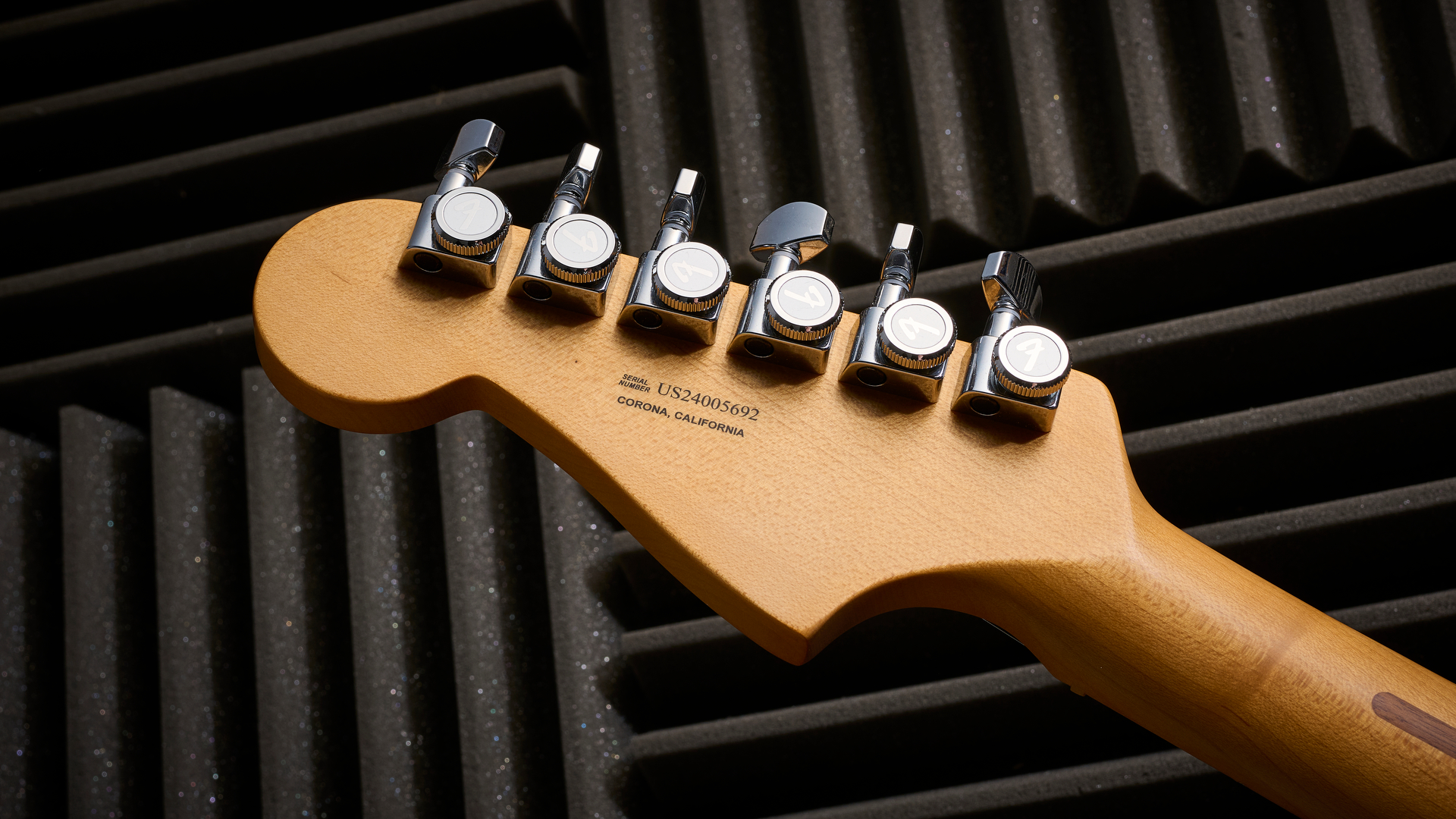
Verdict
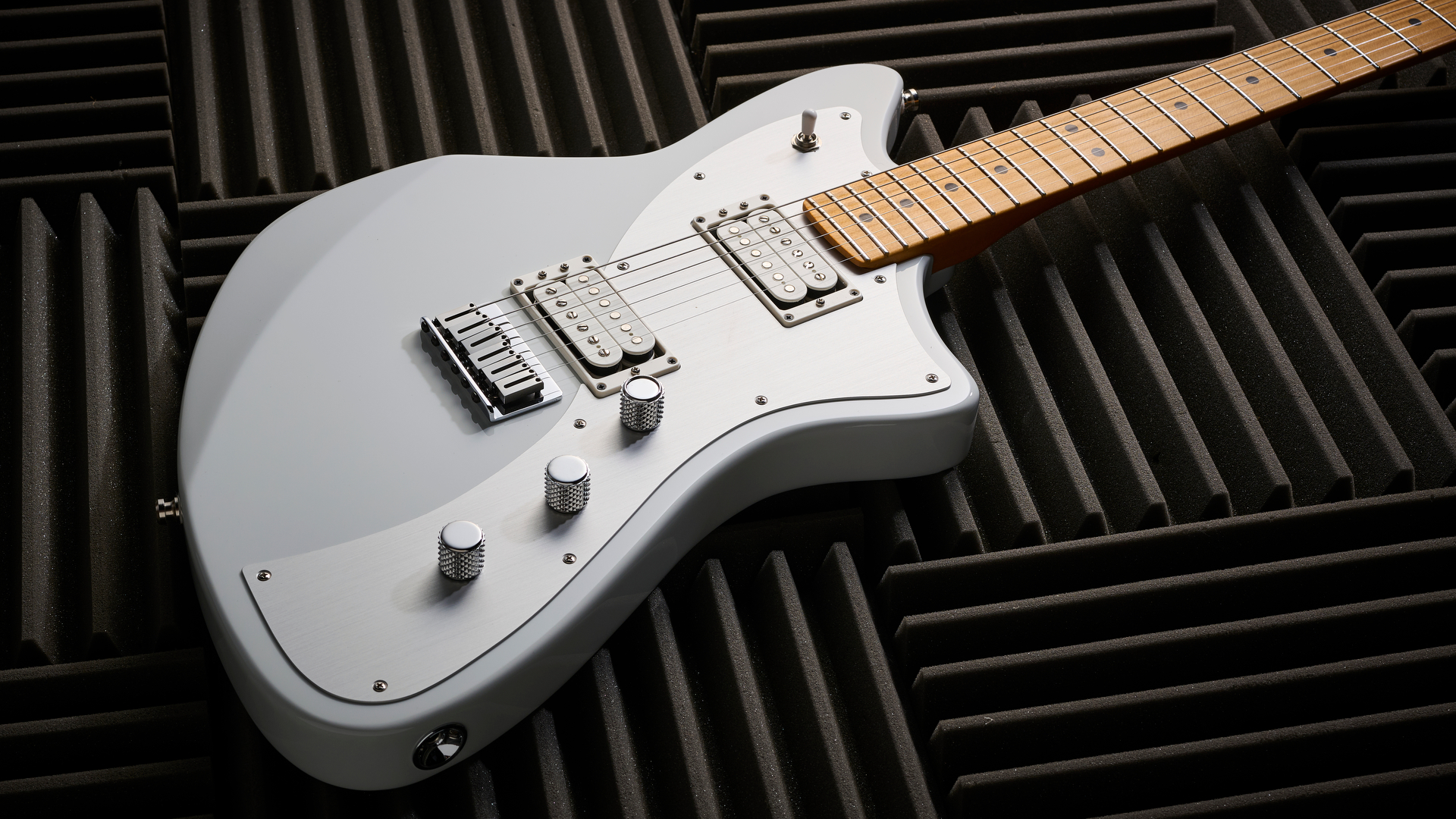
With this high-spec American Ultra II edition, Fender is pitching the Meteora as its modern offset, with the Jazzmaster a more vintage platform. And I’d argue this is the former’s most successful incarnation yet.
Some players may long for the Strat-style vibrato that graced the Player Plus version – and yes, the color options are a little bland compared to the more affordable Meteora’s Silverburst and Cosmic Jade – but everything about this guitar is dead-on trend, right down to the Reverend and Yamaha-inspired bass cut control.
The Meteora is a comfortable shape that’s effortlessly playable and loaded with inspiring, versatile tones for anyone who doesn’t want just another Strat or Tele, and lends itself to heavier styles as well as alternative players seeking more tweakability from their guitars.
Final verdict: This is one of the best legitimately new guitars Fender has produced in decades – despite one painfully positioned volume control. As it stands, however, this is convincing proof of the company’s contemporary offset ambitions and a standout guitar in its highest-spec range. Long live the Meteora!
Test | Results | Score |
|---|---|---|
Build quality | Unfaultable across the board, but that volume knob placement could be a problem. | ★★★★☆ |
Playability | Slick, smooth, satisfying – perfection. | ★★★★★ |
Sounds | Impressive palette of tones, although the neck humbucker sure is bass-y. | ★★★★☆ |
Overall | Fender USA's most high-performance offset yet lives up to its marketing spiel. | ★★★★☆ |
Also try
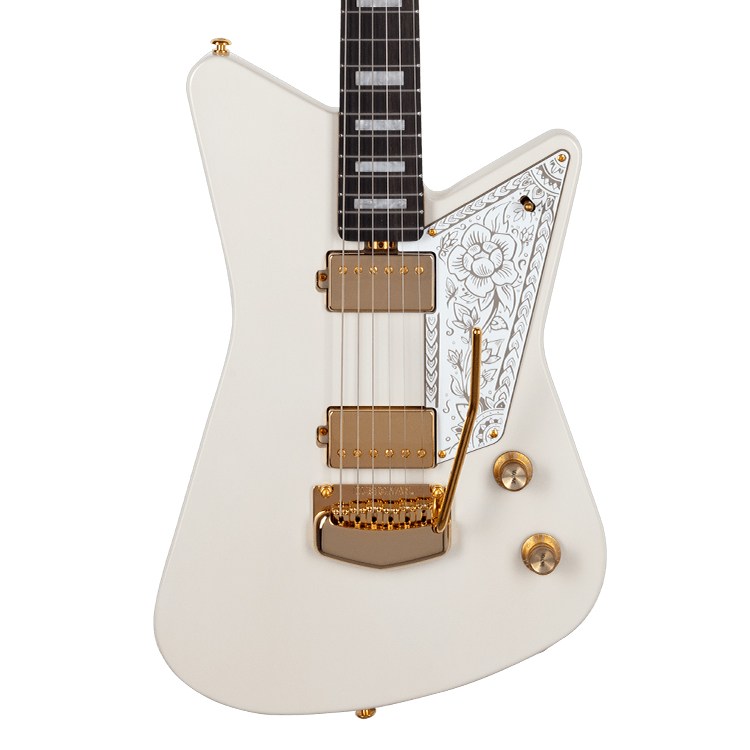
$3,199/£3,199
With a straightforward pair of humbuckers and no coil-split, this Omar Rodríguez-López signature model is a simpler drive than the Meteora, but it offers a similarly slick playing feel.
Read more: Ernie Ball Music Man Mariposa review
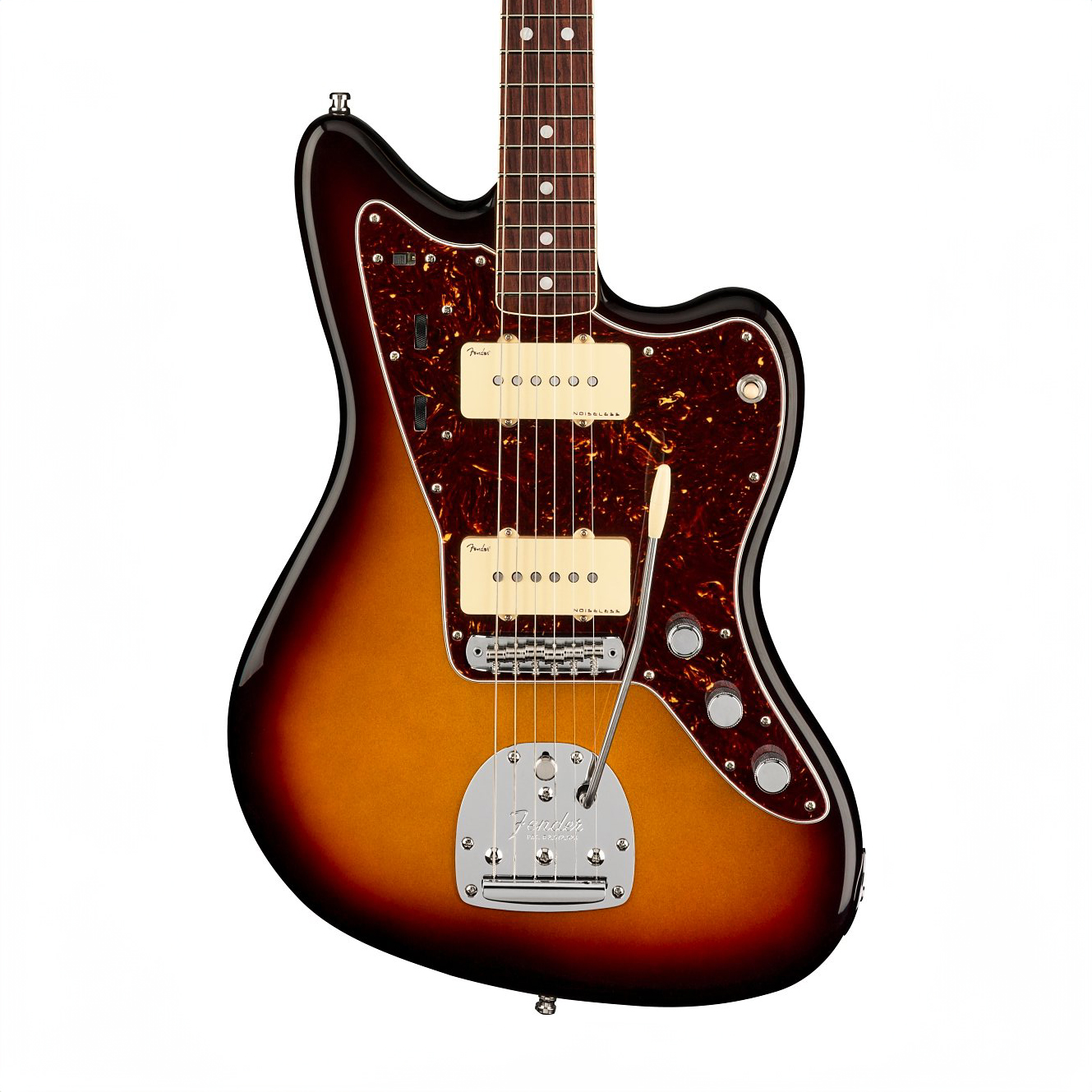
$2,069/£2,189/€2,489
For anyone seeking a not quite so off-the-wall offset, the Jazzmaster from the original American Ultra range is still available at the time of writing. It offers Ultra Noiseless single coils, rear contouring, and slider switches for phase and series switching.
Read more: Fender American Ultra Jazzmaster review
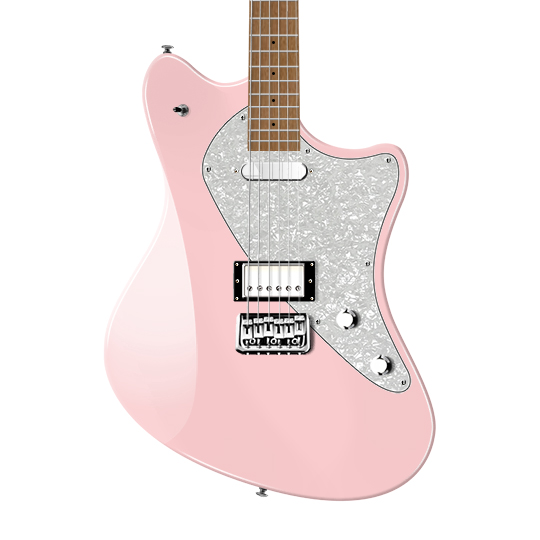
From $2,000
Balaguer was one of the trailblazers in the modern-day high-performance offset scene. Its Espada shape evolves the classic Jazzmaster outline, and you can spec it however you wish for a similar outlay to Fender's offering, dependent on parts.
Read more: Balaguer Standard Series Espada review
Hands-on videos
Guitar Center
Premier Guitar
Andertons

Mike is Editor-in-Chief of GuitarWorld.com, in addition to being an offset fiend and recovering pedal addict. He has a master's degree in journalism from Cardiff University, and over a decade's experience writing and editing for guitar publications including MusicRadar, Total Guitar and Guitarist, as well as 20 years of recording and live experience in original and function bands. During his career, he has interviewed the likes of John Frusciante, Chris Cornell, Tom Morello, Matt Bellamy, Kirk Hammett, Jerry Cantrell, Joe Satriani, Tom DeLonge, Ed O'Brien, Polyphia, Tosin Abasi, Yvette Young and many more. In his free time, you'll find him making progressive instrumental rock under the nom de plume Maebe.
You must confirm your public display name before commenting
Please logout and then login again, you will then be prompted to enter your display name.
“I could be blazing on Instagram, and there'll still be comments like, ‘You'll never be Richie’”: The recent Bon Jovi documentary helped guitarist Phil X win over even more of the band's fans – but he still deals with some naysayers
“I just learned them from the records. I don’t read tabs or anything, I don’t read music – I learned by ear”: How a teenage Muireann Bradley put a cover of Blind Blake’s Police Dog Blues on YouTube and became a standard bearer for country blues
“The Strat was about as ‘out’ as you could get. If you didn’t have a Floyd Rose, it was like, ‘what are you doing?’”: In the eye of the Superstrat hurricane, Yngwie Malmsteen stayed true to the original
